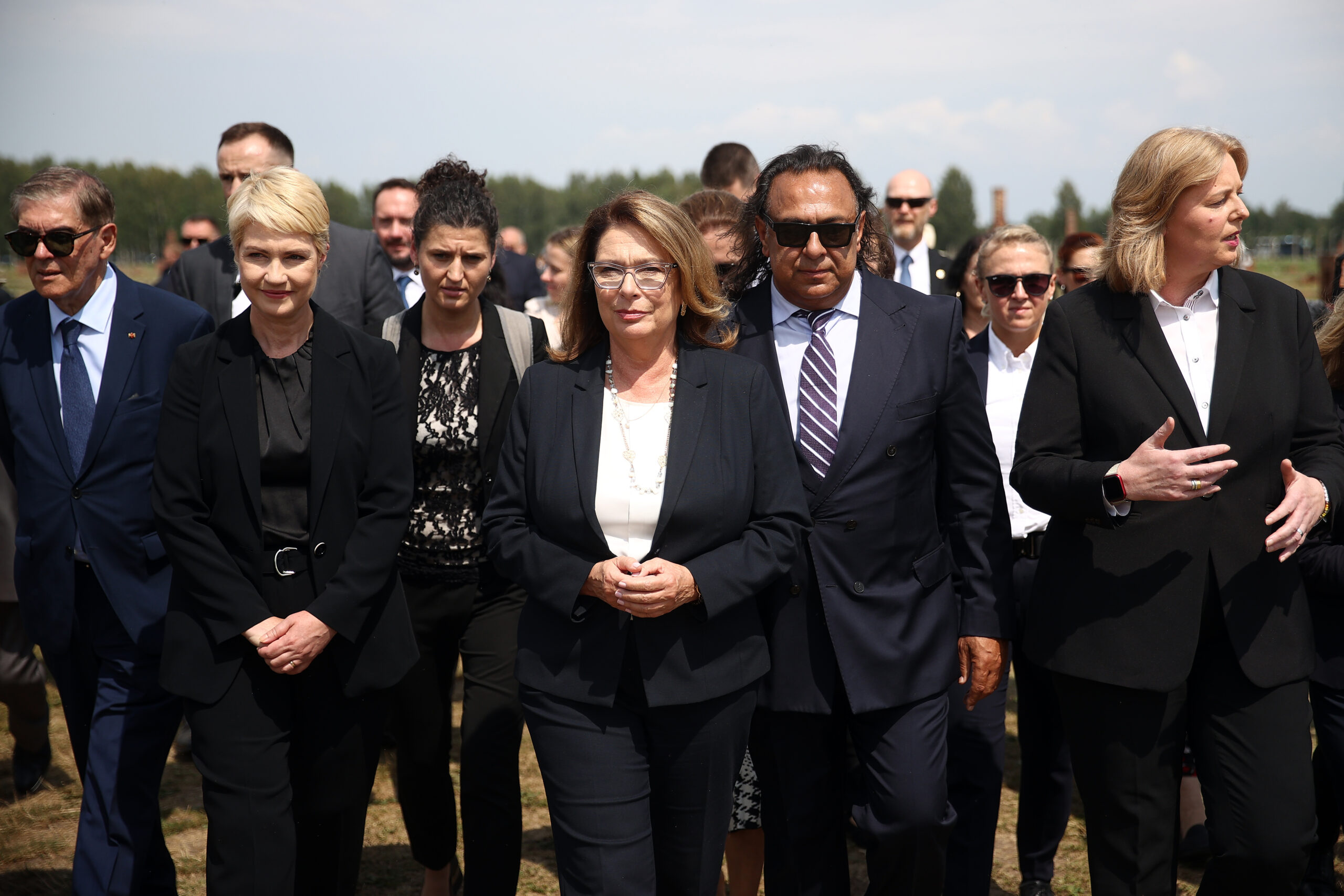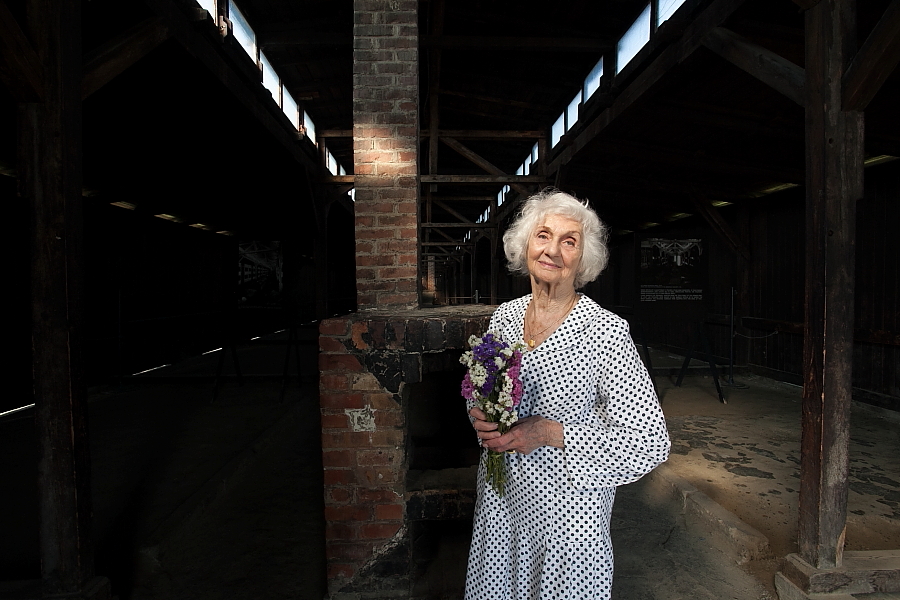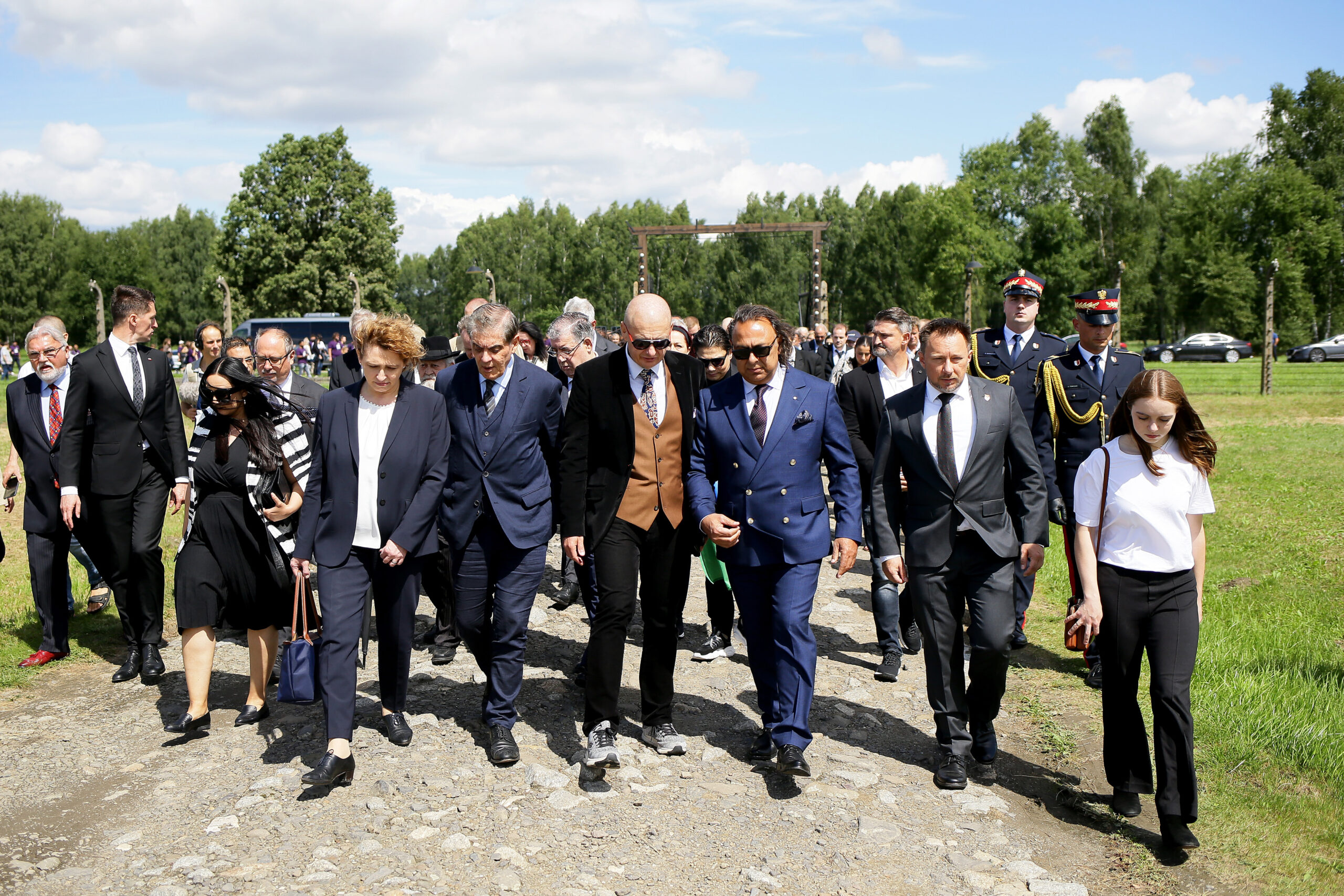
IHRA
The International Holocaust Remembrance Alliance (IHRA) was established in 1998 by Swedish Prime Minister Gøran Persson. It is an intergovernmental organization composed of experts and governments to keep alive and promote the memory of the Holocaust in the fields of education, research and the commemorative culture. The alliance, whose number of member states has grown to 34 by now, is committed to the observance of the Stockholm Declaration formulated in 2000.
Since 2007, there has been a separate working group dealing with the genocide of Sinti and Roma. As of 2011, the Committee on the Genocide of the Roma has been an integral part of IHRA’s work. The Central Council and the Documentation Center of German Sinti and Roma have been represented by an expert in the German delegation since 2016.
Arbeitsgemeinschaft der Gedenkstättenbibliotheken
The Association of Memorial Site Libraries (AGGB) was established in 1998 on the initiative of the Memorial and Educational Site of the House of the Wannsee Conference, Berlin and the Topography of Terror Foundation, Berlin. It aims to support the work and acceptance of libraries in memorial sites and related institutions through cooperation, professional exchange and targeted training. The library of the Documentation and Cultural Center of the German Sinti and Roma has been a member of the AGGB since the early 2000s and – represented by the in-house librarian – is a regular attendee at conferences of the working group. In 2013, the Documentation and Cultural Center itself hosted a conference.
Comité International de Dachau
As an independent organization, the Comité International de Dachau (CID) is the mouthpiece of the former prisoners of the Dachau Concentration Camp from 37 countries and was founded by the prisoners even before the liberation of the camp. The Dachau Concentration Camp Memorial was established in 1965 thanks to the dedication and commitment of the Committee and is still under its responsibility today. The CID especially focusses on the development of the concentration camp memorial site as a place of remembrance and learning and equally important to the mission to not allow this to happen again.
House of the Wannsee Conference
Through its permanent exhibition and educational program, the House of the Wannsee Conference Memorial and Education Center commemorates the conference on the so-called “Final Solution of the Jewish Question” held in the villa on January 20, 1942, which was attended by high-ranking representatives of the SS, NSDAP and several Reich ministries. The Documentation Center is represented in the memorial’s sponsoring association.
Stiftung Bayerische Gedenkstätten
Since its establishment on January 1, 2003, the Bavarian Memorials Foundation has been responsible for the Dachau and Flossenbürg concentration camp memorials. The starting point for the foundation’s establishment was the fundamental assumption that the remembrance of the Nazi terror represents a duty for society as a whole.
Brandenburg Memorials Foundation
The foundation commemorates terror, war and dictatorship and promotes public discussion of these topics. Its task is to investigate, document and publish the structure and development of the Nazi concentration camps and their sub-camps in Brandenburg, as well as the history of the NKVD camps and the political criminal justice of the GDR. Furthermore, it enables victims and survivors to commemorate them with dignity. The Documentation and Cultural Center of German Sinti and Roma is represented on the Foundation’s advisory board by Petra Rosenberg, chairwoman of the National Association of German Sinti and Roma Berlin-Brandenburg. Romani Rose is also a guest on the Foundation’s Board as Chairman of the Central Council of German Sinti and Roma.
International Auschwitz Committee
The International Auschwitz Committee is an association of Auschwitz survivors and their organizations. The International Auschwitz Committee unites organizations, foundations and Holocaust survivors from 19 countries. It’s office is located in Berlin.
Committee for Regional and Minority Languages
The Documentation Center is a member of EBLUL-Germany e.V., an association whose purpose is to promote the recognized autochthonous regional and minority languages of Germany and encourage an exchange with other regional and minority languages in Europe. The linguistic diversity of Europe is to be brought to the public awareness as a European cultural asset especially worthy of protection.
The association is the follow-up-organization of the German State Committee of the European Bureau for Lesser-Used Languages (EBLUL). Representatives from a total of six language groups are part of EBLUL Germany: Danish minority, Low German, North Frisians, Sater Frisians, Sorbs and Sinti and Roma. Every language group is represented by two delegates.
Stiftung für die Internationalen Wochen gegen Rassismus (Foundation for the International Weeks Against Racism)
The Foundation for the International Weeks against Racism (short: Foundation against Racism) plans and coordinates the annual UN Weeks against Racism in Germany. It develops and promotes model projects to overcome racism and the marginalization of minorities, produces extensive information material and organizes conferences. Romani Rose, Chairman of the Documentation and Cultural Center of German Sinti and Roma, is a member of the foundation council.
The International Auschwitz Council
The International Council of the Auschwitz-Birkenau State Museum was established in 1990 on the orders of the Minister of Culture and Art of Poland. The council advises and supports the Auschwitz-Birkenau State Museum in its various activities. Members of the council are world-renowned experts and authorities on the subject of concentration camps and the Holocaust. The Documentation and Cultural Center is represented on the International Auschwitz Council by its Chairman, Romani Rose.
International Committee Buchenwald-Dora and Commandos
The International Committee Buchenwald-Dora and Commandos was established after the war and commemorates the illegal International Camp Committee, which played a crucial role in the resistance against the SS inside the concentration camp. It sees itself as a defender of the humanistic values that formed the basis of the prisoners’ struggle to resist the deadly and inhumane machinery of the Nazis.
Topography of Terror Foundation
The most important headquarters of Nazi terror: The Gestapo, the Reichsführung-SS, the Secret Service (SD) of the SS and, during World War II, also the Reich Security Main Office were on the grounds of the “Topography of Terror” in Berlin from 1933 until 1945. The purpose of the Topography of Terror Foundation is to impart historical knowledge about National Socialism and to encourage an active examination of this period and its consequences after 1945 – at the historical site “Topography of Terror” and beyond. The Documentation and Cultural Center of German Sinti and Roma is represented on the Foundation’s advisory board.
Lower Saxony Memorials Foundation
The Lower Saxony Memorials Foundation maintains and designs the Bergen-Belsen memorial and the memorial at the Wolfenbüttel Penitentiary. Both are places of remembrance of the suffering of the victims of National Socialism and places of learning for future generations. The Documentation and Cultural Center of German Sinti and Roma is represented on the Foundation’s advisory board.
Saxon Memorial Foundation
The Saxon Memorial Foundation commemorates the victims of the Nazi dictatorship and the communist dictatorship in the Soviet occupation zone and the GDR. It preserves and makes historic places of violent political crimes and political injustice in the Free State of Saxony accessible and designs them as places of historical and political education. The Documentation and Cultural Center of German Sinti and Roma is represented on the Foundation’s advisory board.




